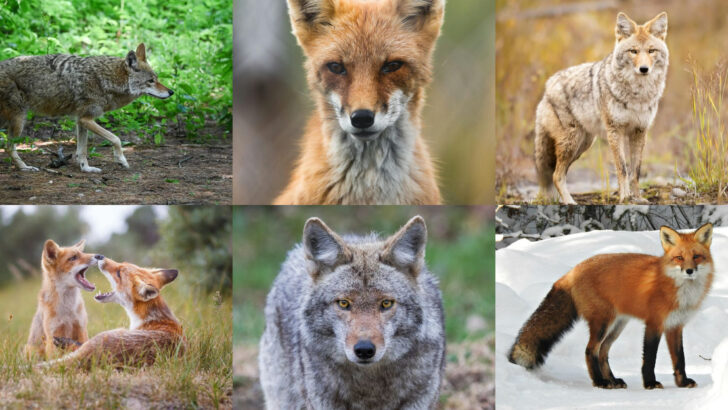Foxes and coyotes may look like distant cousins at a family reunion, but don’t be fooled—they couldn’t be more different. One is a stealthy trickster with a mischievous glint in its eye, the other a rugged survivor built for endurance.
Foxes are small, sly, and often act like they own the place. They’re known for their quick wit, bushy tails, and ability to adapt to just about any environment.
Meanwhile, coyotes are larger, tougher, and travel in tight-knit packs, howling their way across the open wild. While both are clever canines, their behaviors, hunting styles, and social structures set them worlds apart.
Think of foxes as the clever outlaws and coyotes as the nomadic warriors of the animal kingdom. Curious to know what truly separates these two?
From their eerie calls to their secret survival tactics, here are 17 key traits that make each of them stand out in the wild.
Size and Body Build
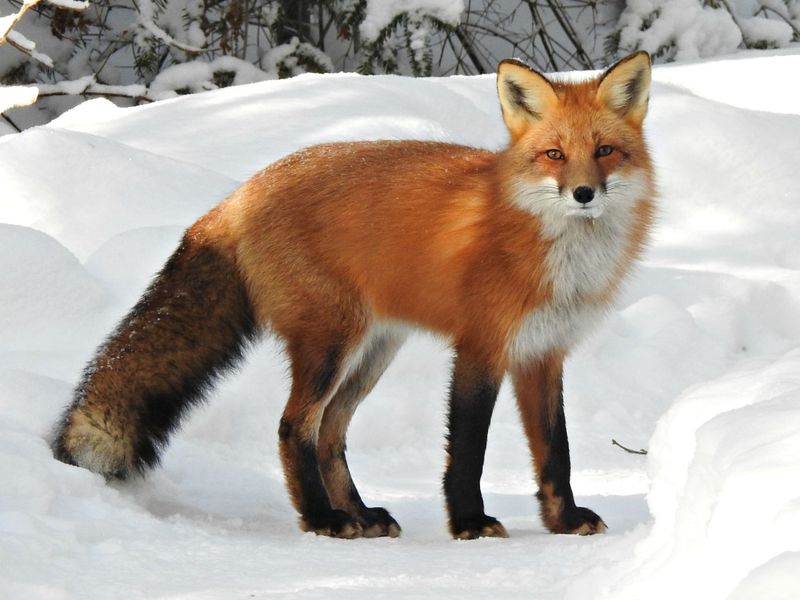
The size difference between foxes and coyotes is striking. Coyotes tend to be larger, with a body length that can reach up to 34 inches, while foxes usually measure around 20 inches.
This significant size gap is reflected in their build as well. Coyotes possess a more robust and muscular frame, adapted for long-distance travel and endurance.
On the other hand, foxes have a more slender, agile form, perfect for quick, agile movements. This distinct contrast in size and build plays a crucial role in their hunting techniques and survival strategies.
Fur Coloration and Patterns

A kaleidoscope of fur colors distinguishes these two animals. Foxes often boast a vibrant palette, with striking reds, whites, and blacks, creating a vivid appearance.
Coyotes, in contrast, exhibit more muted tones, primarily consisting of gray and brown, helping them blend seamlessly into their native environments. These coloration differences not only serve as camouflage but also reflect their habitats and lifestyles.
While foxes might sport a bushy white-tipped tail, coyotes display a more uniform, grizzled look. Fur patterns, thus, tell a story of adaptation and survival in diverse environments.
Tail Characteristics
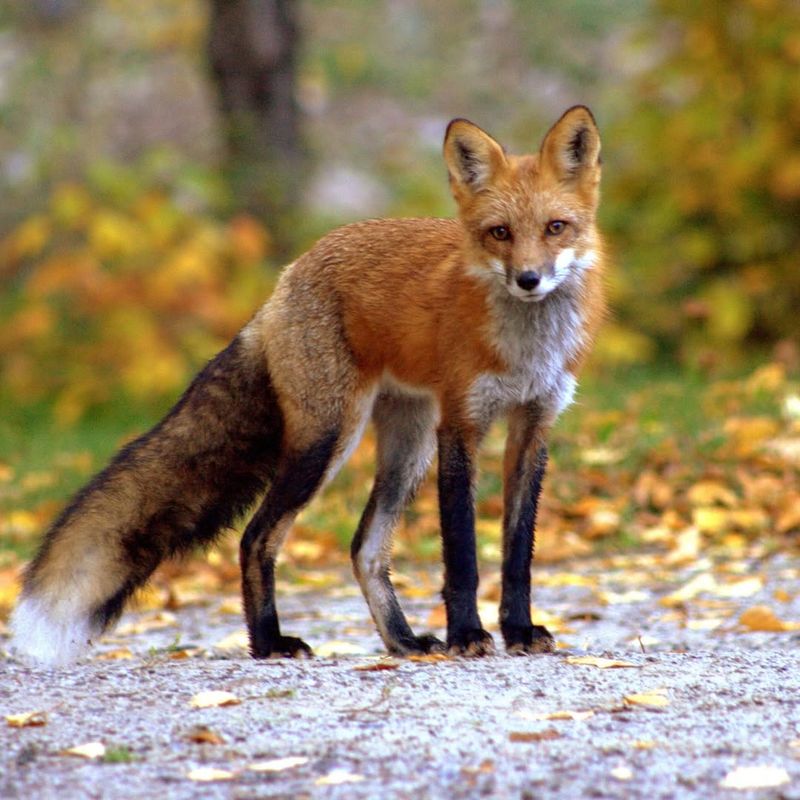
The tails of foxes and coyotes are not just appendages but significant identifiers. Foxes are often recognized by their bushy tails that end in a distinctive white tip, adding to their charm.
Coyotes, however, have a bushier tail that is less flamboyant, typically hanging down with a subtle blend of colors. These tails are not just for show; they play a part in communication and balance.
Foxes use their tails to signal to others and maintain agility, whereas coyote tails are more adapted for keeping balance during high-speed chases.
Habitat Preferences
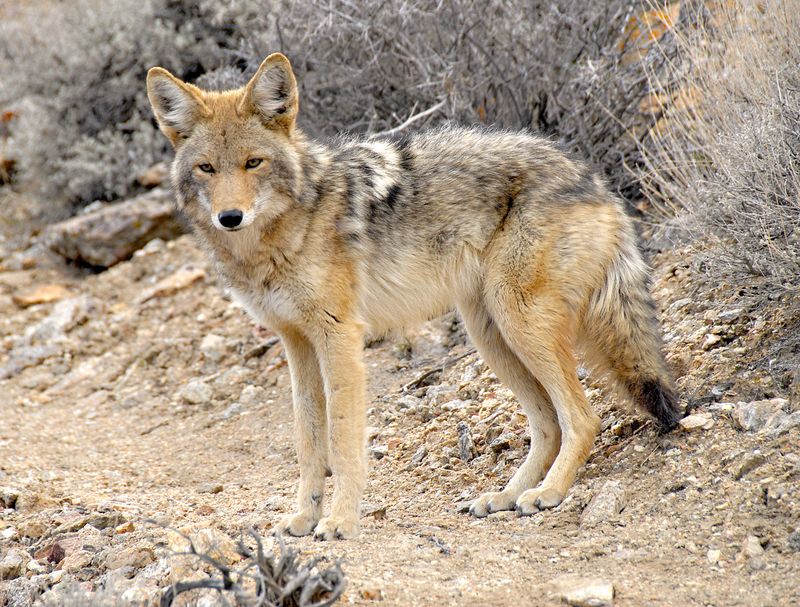
Foxes and coyotes have adapted to thrive in different habitats, showcasing nature’s diversity. Foxes are usually found in forested and wooded areas, where their agile bodies can maneuver through dense vegetation with ease.
Coyotes, however, are more versatile, often seen in grasslands, deserts, and even urban settings. This adaptability allows them to hunt a wide range of prey and explore various environments.
While foxes prefer the cover of forests, coyotes take advantage of open spaces, showcasing their resilience and ability to thrive in diverse conditions.
Vocalizations and Communication

Communication in the wild is as varied as it is crucial. Foxes are known for their unique vocalizations, which include a series of barks, screams, and howls that are quite distinct.
They use these sounds to communicate with each other, especially during hunting or mating seasons. Coyotes, on the other hand, are famous for their howls, yips, and barks that often fill the night air.
Their vocalizations serve to communicate territory, alert pack members, and establish dominance. This rich tapestry of sounds highlights the complex social structures of these canids.
Dietary Habits
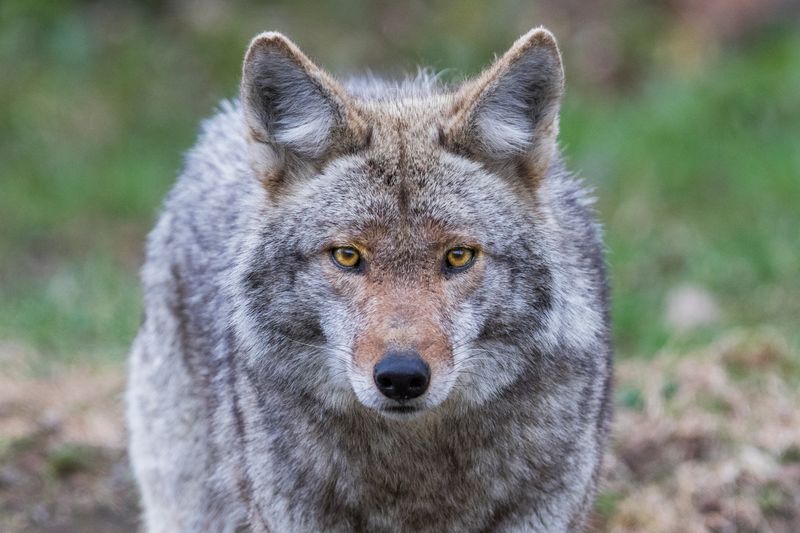
The dietary habits of foxes and coyotes illustrate their adaptability and resourcefulness. Foxes are omnivores, often hunting small mammals, birds, and insects, but they also enjoy fruits and berries.
Their diet reflects their environment, showing versatility in their feeding habits. Coyotes, with a more opportunistic approach, consume a broader range of food, including larger mammals, carrion, and even human leftovers in urban areas.
This flexibility in diet allows coyotes to adapt to various environments and food availability, showcasing their survival skills in the wild.
Reproductive Behavior
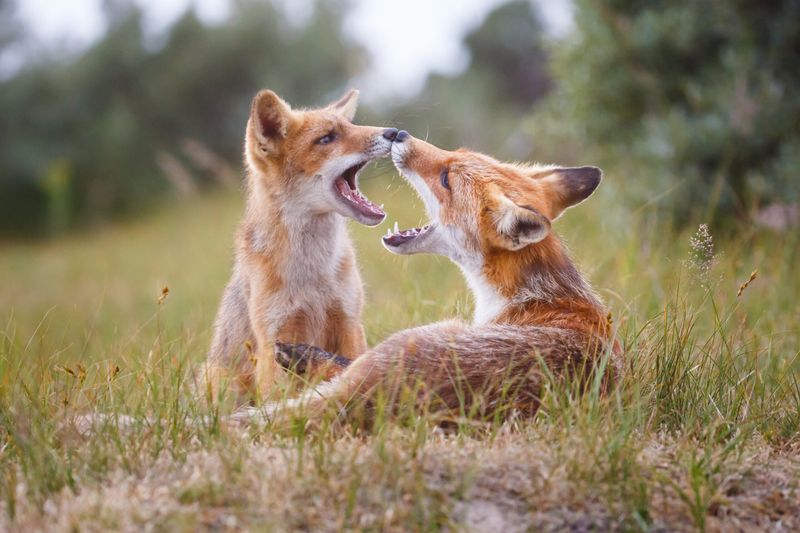
Reproductive strategies in foxes and coyotes reveal fascinating differences. Foxes typically mate for life, forming strong monogamous pairs, and their denning behavior is quite elaborate, with both parents sharing in raising the young.
Coyotes, however, may form monogamous pairs but are more likely to have multiple partners over a lifetime. Their reproduction often involves the entire pack, contributing to raising the young, which fosters a strong sense of community.
These differences in reproductive behavior highlight the varying social structures and survival strategies employed by these canids.
Hunting Techniques
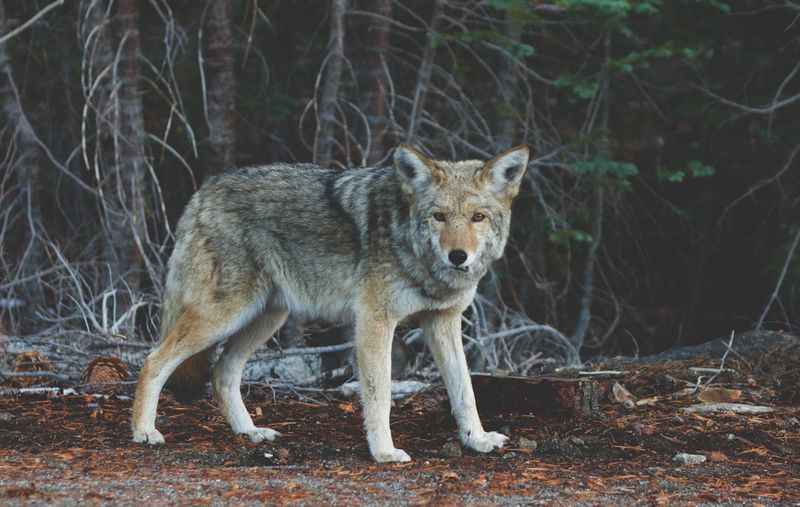
Foxes and coyotes employ different hunting techniques suited to their environments. Foxes rely heavily on stealth and agility, sneaking up on their prey with silent precision.
Their hunting style is often solitary, allowing them to quickly catch small mammals and birds. In contrast, coyotes are more social hunters, often working in pairs or groups to corner and catch larger prey.
Their endurance and strength are crucial in chasing down targets over longer distances. These hunting techniques reflect their physical attributes and social structures, highlighting their evolutionary adaptability.
Lifespan and Mortality
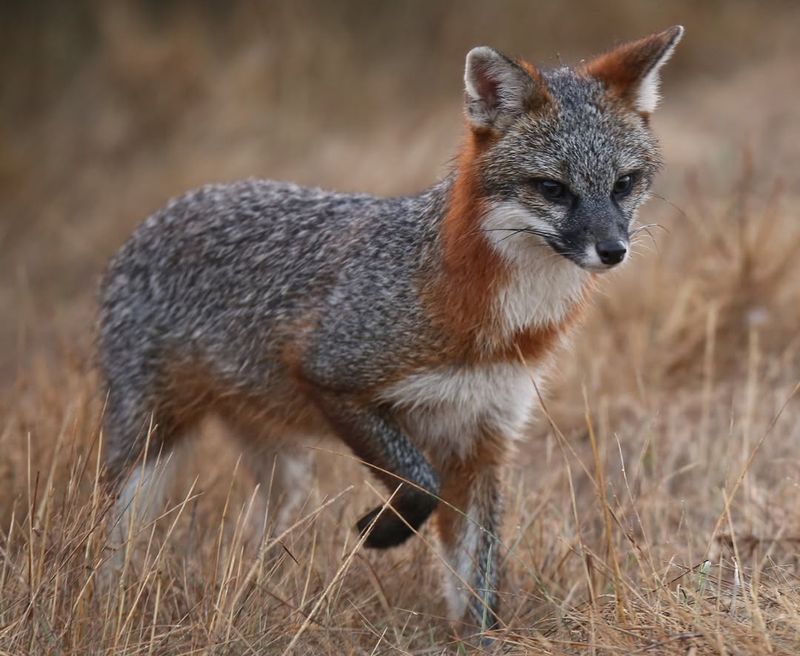
Lifespan differences between foxes and coyotes are shaped by their environments and lifestyles. Foxes generally have shorter lifespans, often living up to 5 years in the wild.
Predation, disease, and environmental factors contribute to their mortality rates. Coyotes, however, can live up to 10 years, benefiting from their adaptability and varied diet.
Despite facing threats from predators and humans, their social structures provide advantages for survival. This contrast in lifespan and mortality rates underscores the challenges and resilience of these canids as they navigate the complexities of the wild.
Social Structure and Behavior

Social structures in foxes and coyotes differ significantly, influenced by their survival strategies. Foxes are more solitary, often forming family units during the mating season but generally preferring to hunt and live alone.
This independence allows them to thrive in diverse environments without relying on others. Coyotes, in contrast, exhibit strong pack behavior, living and hunting in groups that enhance their ability to catch larger prey and protect their territory.
This social structure fosters cooperation and learning, reflecting their adaptive strategies in the wild. These differences highlight the diverse ways canids build their communities.
Scent Marking and Territory
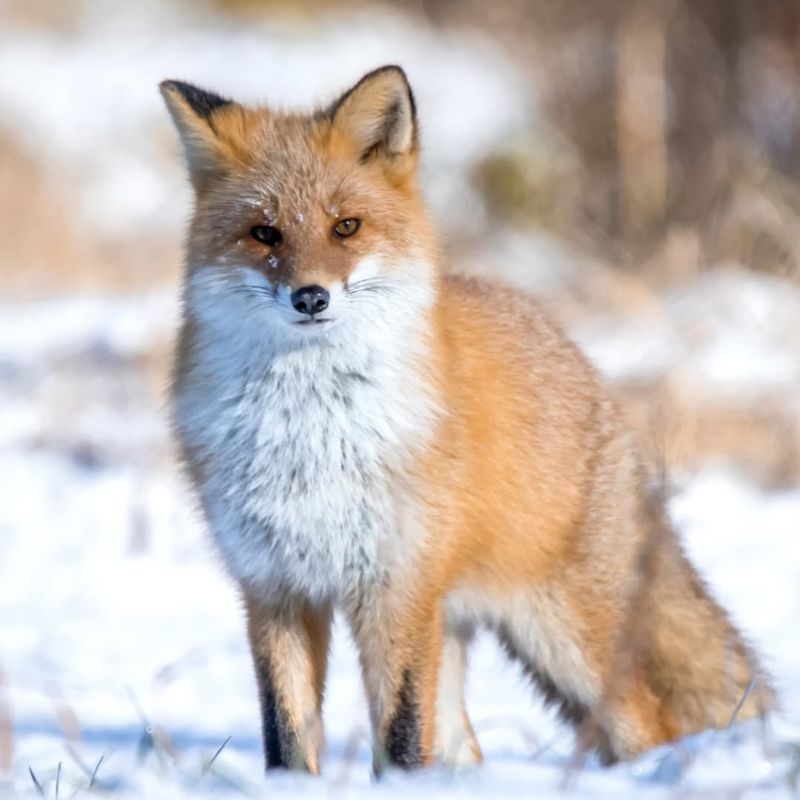
Territoriality is a crucial aspect of life for both foxes and coyotes. Foxes use subtle scent-marking techniques with urine and feces to define their territory and communicate with others.
These marks serve as boundaries for their hunting and living areas, minimizing conflicts with other foxes. Coyotes, on the other hand, exhibit more conspicuous scent-marking behavior, using urine, feces, and gland secretions to stake larger territories.
This behavior reinforces pack hierarchy and alerts other coyotes to their presence. Such territorial strategies showcase their differing approaches to space and resource management in the wild.
Agility and Speed
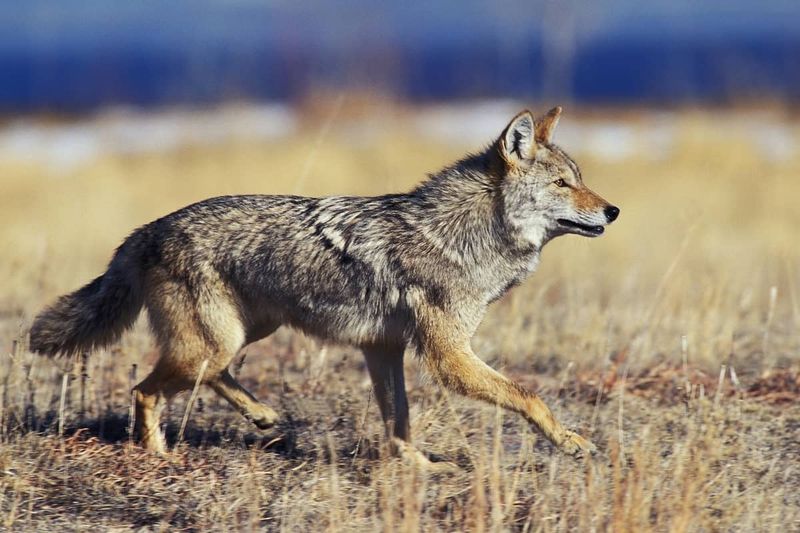
Agility and speed play vital roles in the survival of foxes and coyotes. Foxes, with their slender bodies and quick reflexes, excel in rapid, agile movements, capable of swift turns and maneuvers.
This agility helps them evade predators and catch nimble prey. Coyotes, while also fast, rely more on endurance and sustained speed over longer distances.
Their powerful legs and stamina enable them to pursue prey with relentless determination, often covering significant ground. These physical attributes highlight their unique adaptations and strategies for thriving in their respective environments.
Adaptation to Urban Environments

Urban environments pose unique challenges, yet both foxes and coyotes demonstrate remarkable adaptability. Foxes tend to be more elusive in cities, finding hidden spaces like gardens and parks to make their homes.
They rely on their stealth and smaller size to avoid human interaction. Coyotes, however, are more conspicuous, often seen roaming city streets and adapting their diets to include human leftovers.
This ability to thrive in urban areas reflects their resilience and intelligence. Despite the challenges, both species manage to coexist with humans, showcasing their adaptability in changing landscapes.
Nocturnal vs. Diurnal Activity

Activity patterns in foxes and coyotes reveal their adaptation to different environmental niches. Foxes are predominantly nocturnal, using the cover of night to hunt and explore their territories.
This behavior helps them avoid predators and human disturbances. Coyotes, however, display more flexible activity patterns, often active during both day and night.
This adaptability allows them to exploit various opportunities, whether hunting or scavenging. Their diurnal nature in certain regions is influenced by food availability and human presence.
These activity patterns highlight their ability to adapt and thrive in diverse environments.
Cultural Significance and Perception
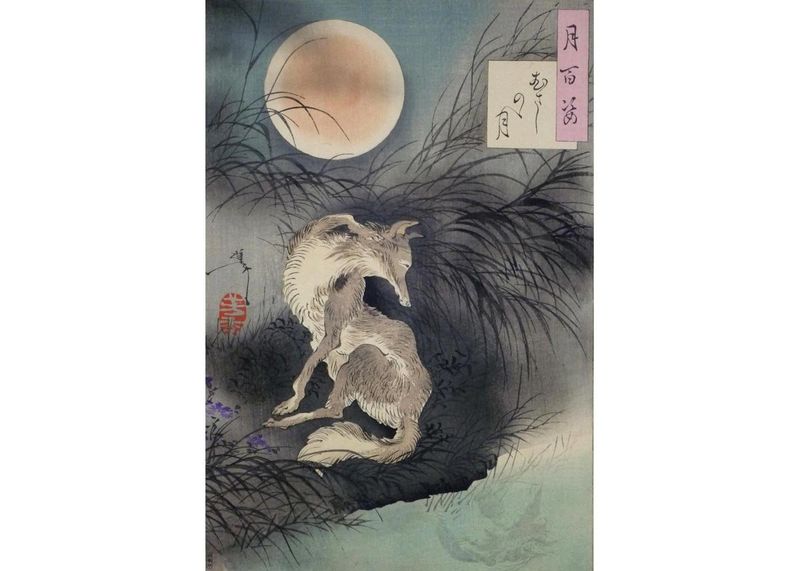
Cultural significance and perception of foxes and coyotes vary globally, reflecting diverse human interactions. Foxes often embody cleverness and cunning in folklore, appearing in tales and myths as tricksters or wise guides.
Their mysterious nature captivates the human imagination. Coyotes, conversely, are often associated with adaptability and survival, respected for their resilience in the wild.
In some cultures, they symbolize transformation and resourcefulness. These cultural perceptions shape our understanding and attitudes towards these animals, influencing conservation efforts and coexistence strategies.
Through folklore and media, they leave a lasting imprint on human culture.
Interaction with Humans
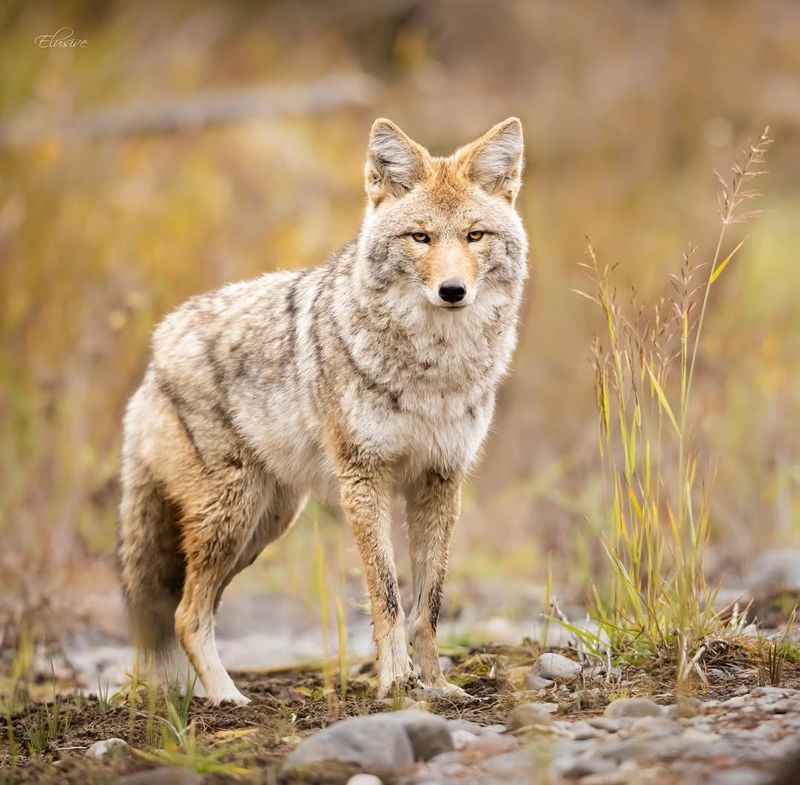
Human interactions with foxes and coyotes have shaped their behavior and survival strategies. Foxes are often more wary of humans, preferring to avoid contact and remaining hidden.
This cautious behavior helps them navigate urban environments without conflict. Coyotes, on the other hand, are more bold and opportunistic, sometimes seen scavenging near human settlements.
This has led to a complex relationship, where coyotes are both admired for their adaptability and viewed as nuisances. These interactions highlight the need for understanding and coexistence, emphasizing the importance of respecting wildlife boundaries and promoting conservation efforts.
Paw Size and Structure
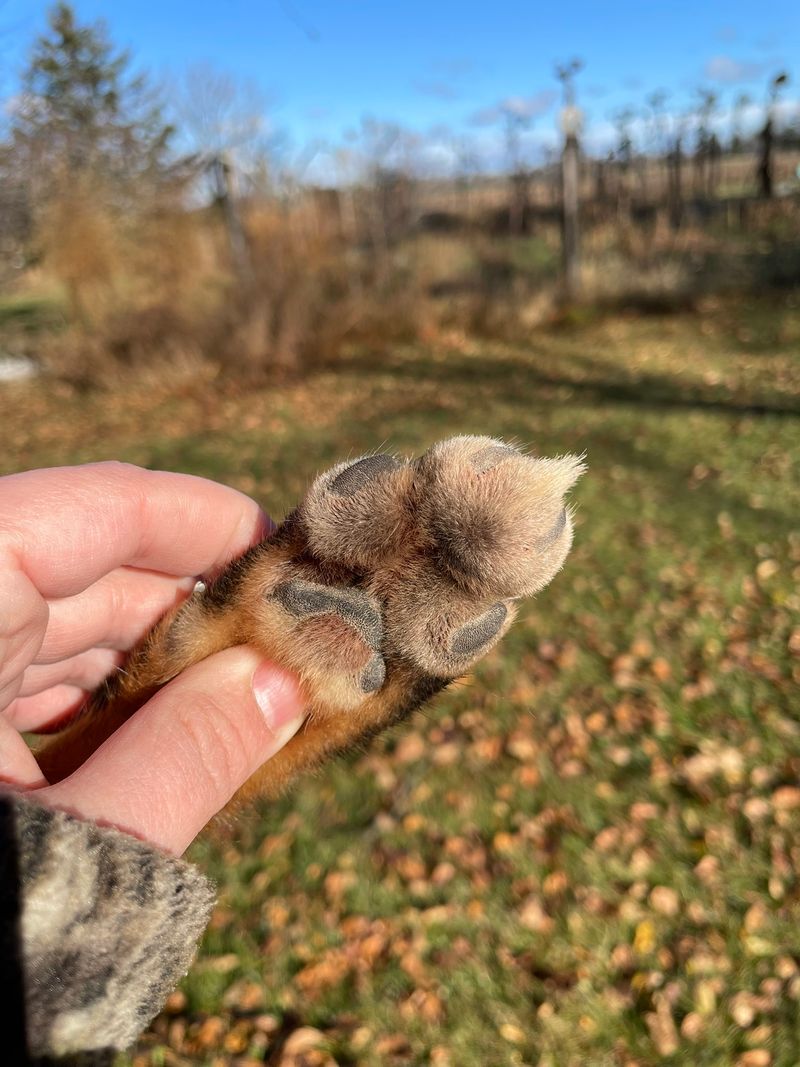
Observing the tracks left by these canids, one can notice that foxes have smaller, more compact paw prints compared to coyotes. This compactness allows them to tread lightly and move with stealth through their environment.
Coyotes boast larger paws, which help them traverse diverse terrains more efficiently.
The structure of their paws influences their agility and speed. Foxes are adept at maneuvering through tight spaces and can perform swift, nimble movements.
Coyotes, equipped with their broader paws, are better suited for endurance, covering long distances and chasing down prey across open landscapes.

